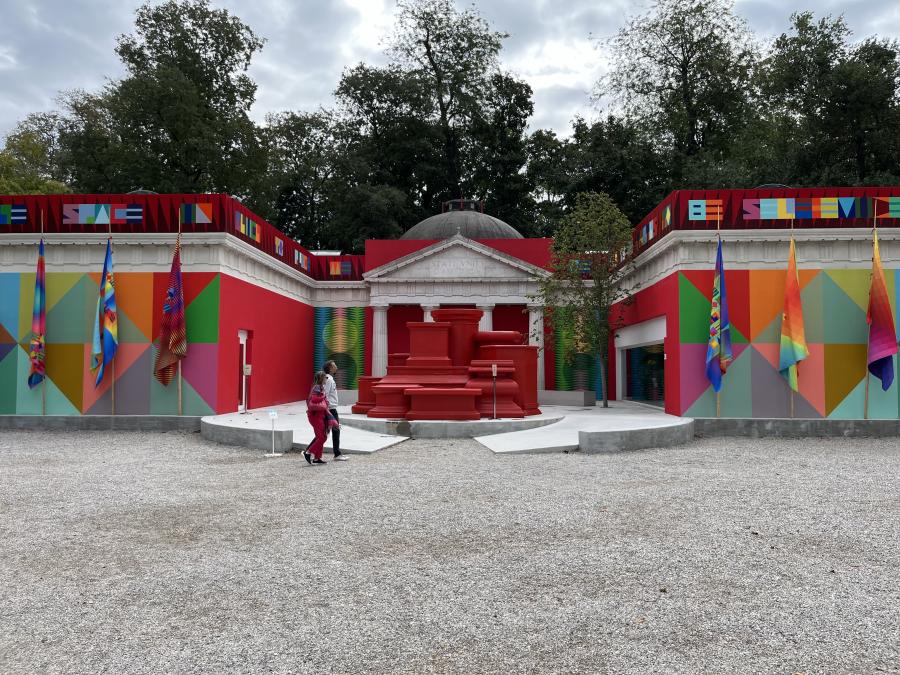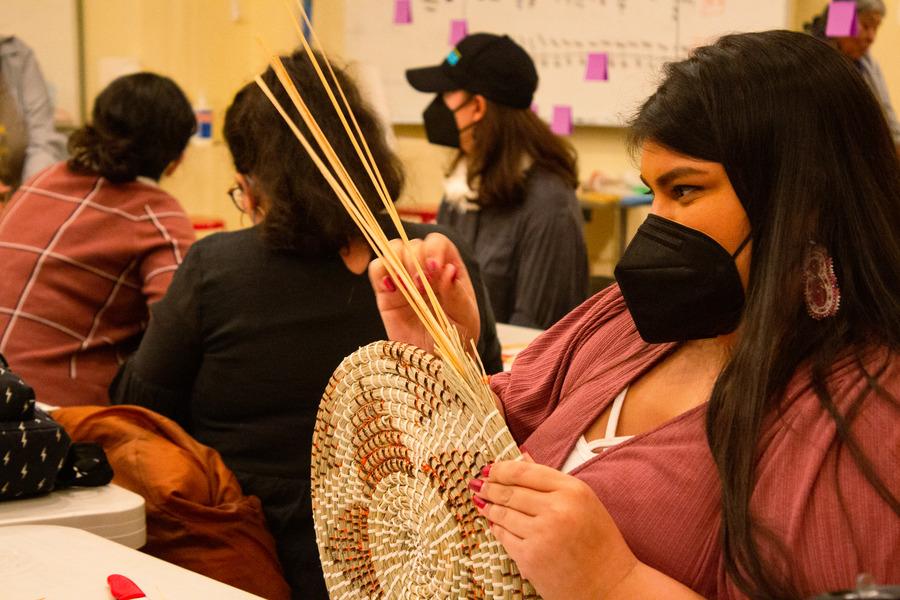
In the Northeastern Coastal Algoquin language, our word for dugout canoe is “mishoon.” Our coastal Tribes have utilized the waterways as ancient highways for thousands of years traveling in mishoon which are considered carbon neutral water vessels. As the original population of the American northeastern region, we have faced European assimilation. Traditional culture is difficult to practice due to laws against our ways of living, which include coastal Tribes not being able to access waterways and being challenged for fishing rights and foraging for trees and plant medicines. These rights and practices have been taken away from our Peoples as early as 1627 and we are still fighting for these rights. I refer to this as laws against our way of living. Our canoe culture allows for the continuous survival of our threatened heritage as coastal people. Much of American and Native American history begins with our geographical Northeastern Coastal Algonquin history through the waterways. It is important to share this history.
Over the years, more traditional work has been done to resurge and revitalize our traditional canoe culture. We are passing down the traditions of identifying the right trees to build dugout canoes, working alongside traditional dugout canoe builders who are teaching the next generation of wisdom keepers, and getting more experience paddling in our traditional waters, all of which is resurging and healing our communities. Continuing to practice our traditional culture educates the next generations in our Tribal communities. As culture bearers, our work helps to illuminate the wider view and understanding of Indigenous people through cultural competency and connectivity to humanity and global diversity.
In June of 2012, I organized and led members of the Shinnecock Indian Nation in a historic four-day canoe journey from Shinnecock territory in Long Island, New York to Mashantucket Pequot and Mohegan territory in southeastern Connecticut across the Long Island Sound with intentions of forming a traditional mishoon society. This journey had not been made in over 400 years. Upon my return, a few of my medicine teachers shared with me that my spirit was awakened during that canoe journey and that much would begin to change. This included my name, Sagkomanau Mishoon Netooeusqua, which translates to, “I lead Canoe I am Butterflywoman.” It was during that time in my life that I fully stepped into who I am, and have not deviated since.
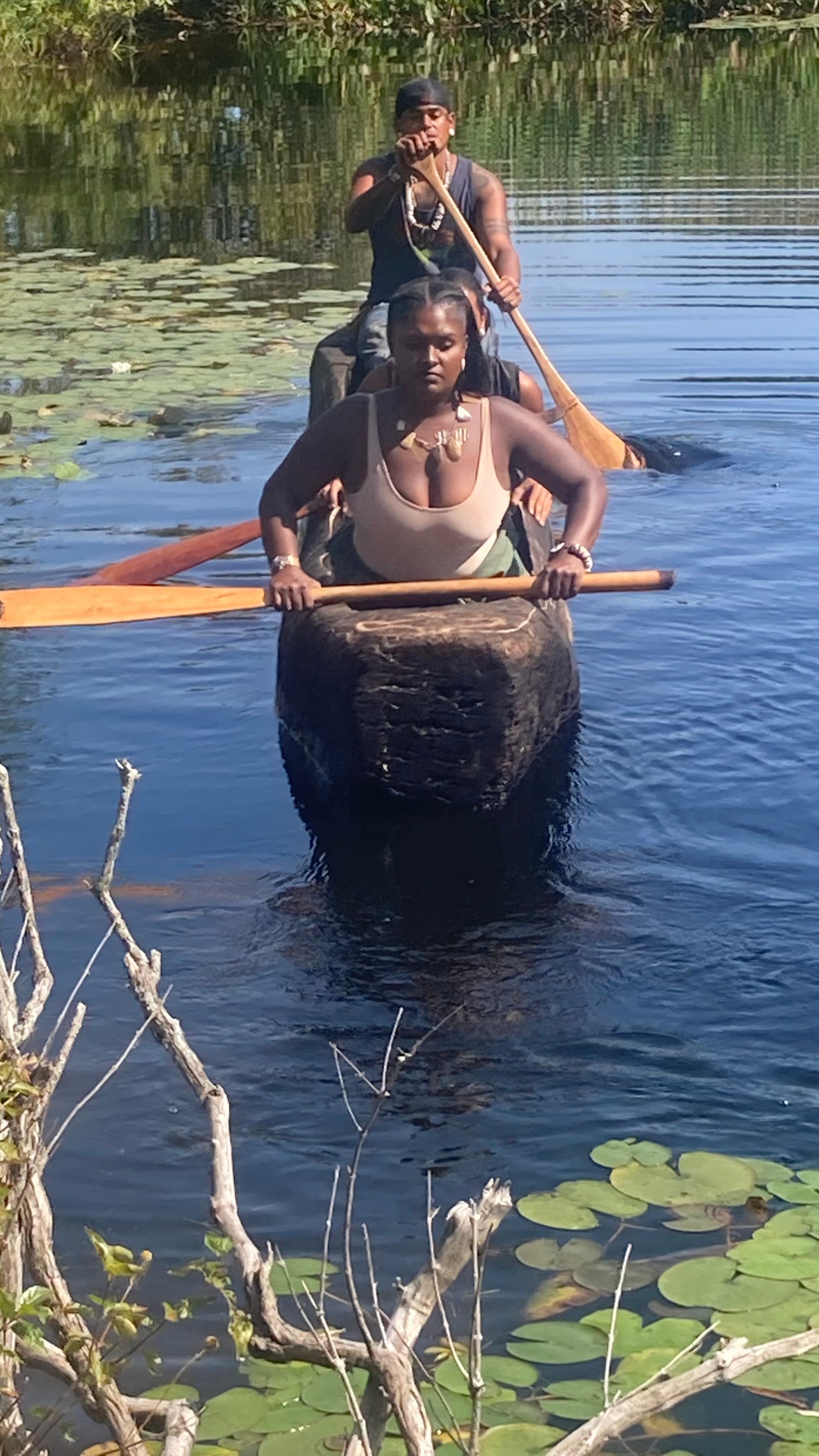
Paddling in the mishoon built in Sudbury. Photo by a relative of Chenae Bullock.
Over the last 25 years Indigenous communities have held paddle ceremonies in honor of their ancestors, such as the Wampanoag Paddle at Falmouth to Martha’s Vineyard, Passamaquoddy Paddle, Sly Fox Canoe Race, and Shinnecock Mishoon Race. “For thousands of years our people have navigated the ocean and our waterways by paddling. It’s an important part of who we are as a people and promotes health and unification. We started our mishoon races seven years ago to reinvigorate that aspect of our culture and it has been great medicine from the start,” says Christan Weaver (Shinnecock), founder of the Shinnecock Mishoon Race.
In 2011, a delegation of a few Shinnecock citizens traveled to Washington State for the first time to paddle to Swinomish in the Tribal Canoe Journeys. In August of 2012, I returned to Washington to paddle to Squaxin Island. Continuing the legacy of my ancestors in 2014, I paddled in the Nipmuc Sacred Deer Island Paddle, which is the annual ceremony that the Nipmuc Peoples of Massachusetts hold in honor of the ancestors that were taken from their traditional territories on the mainland of Massachusetts and stranded on Deer Island without water or food, left to freeze during the coldest months of the year.
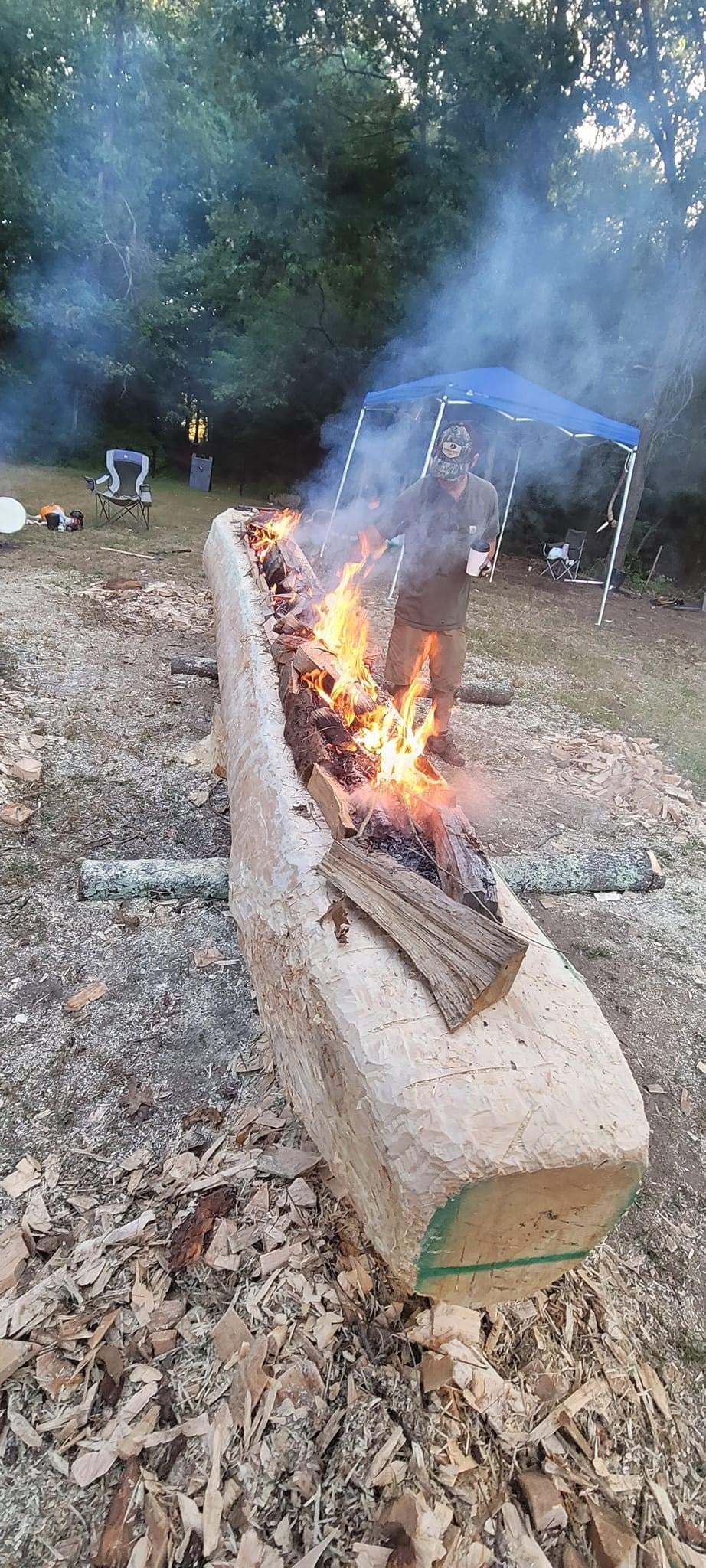
Mishoon Burn. Photo by Andre StrongHeartBear.
Tribal communities from southeastern Connecticut recently created the largest mishoon made in over 400 years. Fourteen paddlers launched the mishoon in the Mystic River, including members of the Wampanoag, Shinnecock, Narragansett, Schaghticoke, and Pequot Tribes. This was the largest New England mishoon that paddled from Mystic Seaport to Noyak Beach. At each stop, canoe families follow common protocols, which includes asking permission to come ashore, often in their Native languages. Once ashore, they are invited to set camp. At night in the longhouses there is gift giving, honoring, and the sharing of traditional prayer, drumming, songs, and dances. Meals, including an evening dinner of traditional foods, are provided by host Nations.
When the Hokulea-Polynesian Voyaging Society set out from their ancestral homelands in the high seas of the Pacific Ocean to sail around the world, all of the culture bearers of the Northeastern seaboard that have been a part of the resurgence of our canoe culture greeted the Hokulea at various stops along our shores. From New York City to the Boston Harbor, our canoes greeted the Hokulea.
Canoe journey events are large and exhilarating experiences, assisting the resurgence of our responsibility as Indigenous people to the water for all humanity. Global water crises such as the Navajo water crisis where a large percent of Navajo families live without running water; contaminated drinking water in Flint, Michigan; the fight against the Dakota Access Pipeline; and the struggle to stop Line 3, a proposed pipeline expansion that would bring nearly a million barrels of tar sands per day from Alberta, Canada to Superior, Wisconsin, are all examples of things we pray for during paddle gatherings.
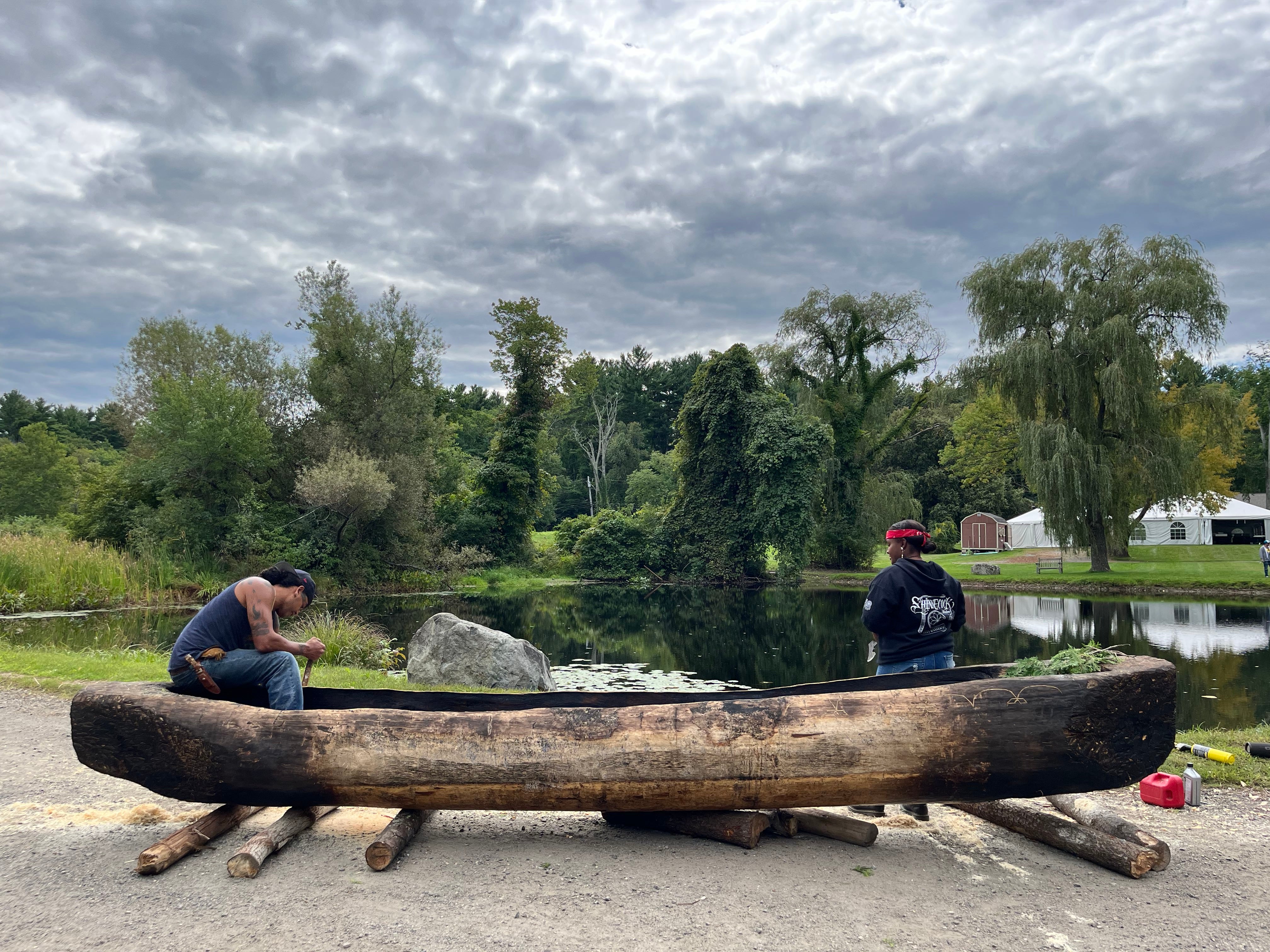
Andre StrongHeartBear and Chenae Bullock working on a mishoon. Photo by Freddie Wilkinson.
Building canoes are an important part of paddle journeys because the mishoon is an extension of our people. The mishoon is alive and must be taken care of throughout her lifetime; the cultural teachings we pass down include those traditional instructions. As coastal people, we were placed on the coast to protect and serve the water and the land. Many of our sister Tribal communities no longer have control over their water sources and are fighting for Indigenous water rights. Our work to resurge our traditional canoe comes with a sense of urgency. Our cultures are what sustains the environment through our Indigenous ecological knowledge. The more people learn about biocentric lifestyles and sustainable living, the more we can collectively come together to help restore the global biodiversity that is needed for our unity.
Andre StrongHeartBear carving the mishoon. Photo by Chenae Bullock.
As we continue to gather to practice our canoe culture, we see how coastal communities are working towards truth and reconciliation within their towns, cities, and states. We are seeking to create a stewardship to compare and learn how assimilation has impacted Indigenous coastal communities. It is our goal as canoe people to foster the restoration of our traditional practice. An inspiring example of creating an educational experience for both Indigenous communities and the public is the recent mishoon burn that took place in Sudbury, Massachusetts at the Wayside Inn in fall 2022, facilitated by Andre StrongHeartBear (Nipmuc) and Hartman Deetz (Mashpee Wampanoag). I was one of three apprentices selected and welcomed with Tribal volunteers to work on the mishoon. The canoe was burned for six days straight—a process that can sometimes take up to 10 days—and shaped to a shared vision. The apprentices were each able to include our personal, hand carved designs on the mishoon to adorn her. Then, after all of the carving and burning was complete, we floated her in the pond nearby. In the words of StrongHeartBear, “These vessels (mishoons) will teach you about patience, pain, love, and acceptance. Every drop of water that falls on the flame connects the spirit of our ancestors to the present day, awakening the truths of our stories to be told.” [Embed video:
To witness and participate in the construction of a traditional mishoon—something that taps into universal human fascination—is a rare and special event. When finished, these canoes will be comparable to ones that were used by Northeastern Indigenous Peoples thousands of years ago. It is essential that we continue to pass this knowledge on and to maintain our Native cultures and practices for generations to come.
I have had to retreat from so many things that have been trying to pull me in every direction, but when I am called to be present to take care of traditional work, everything else is put on hold. This is the balance that is being restored when we take care of our traditional work. When we do not counterbalance the day to day mindset and ways of life of colonization by going deep into our traditional practices, we lose more and more of ourselves. But the moment we retreat into our ancient societies, balance is restored—and that’s the work we have done collectively as sister Tribes, from the start of our prayers during the Green Corn gatherings to paddling in this mishoon built by us.
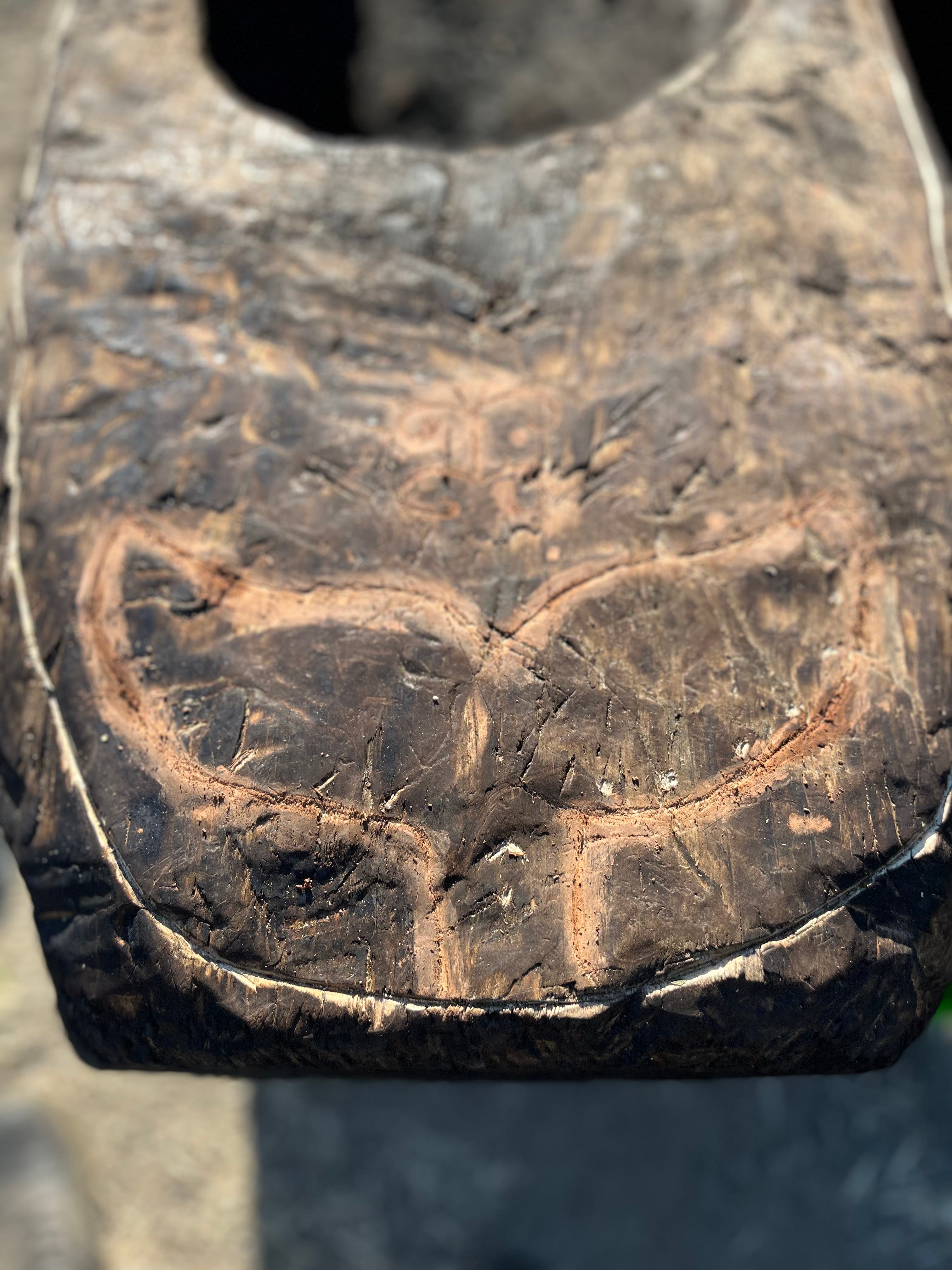
Front of the mishoon hand carved by Chenae Bullock. Photo by Chenae Bullock.
Being able to bring our medicines together to build a vessel to help heal the waters and all life on land with ancient wisdom has been such an honor. These experiences are something we will talk about for the rest of our lives. The importance of the Elders being present with the babies is symbolic of the full circle around our mishoon society. We carry so much medicine as individuals and each of us has different roles, but we are meant to be going in the same direction. The resurgence of our ancient mishoon culture is far from an easy task, but we are doing it like never before. I am looking forward to helping to bring in more resources and building stronger relationships with people to continue to make these experiences possible so our canoe culture can continue to thrive.
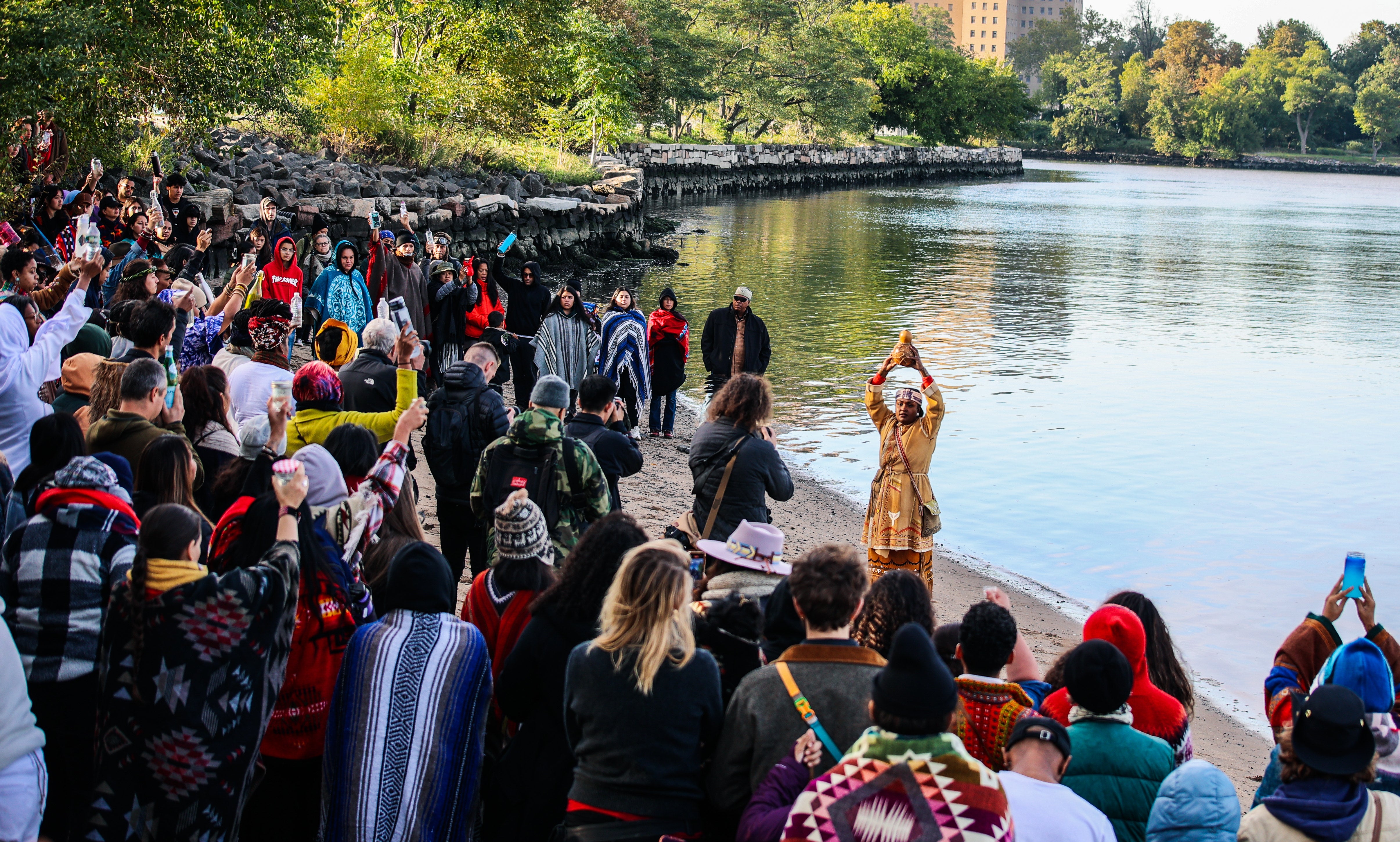
IPDNYC Water Ceremony led by Chenae Bullock. Photo by Adrian Childress.
This year in New York City for Indigenous Peoples Day, I was asked by global Indigenous Elders and water protectors to lead the 8th Annual Water Ceremony on the East River. More people than ever before brought waters from around the globe to be prayed over. We had people from Nigeria, Colombia, the Amazon, and Hawai’i stepping forward to share their ancestral ties to their waterways. In our teachings, when we have water ceremonies, we ask those who are closest to the body of water in which we are gathering to come forth to put their prayers in the water. We as canoe people and culture bearers have a responsibility to come together collectively and help protect waters everywhere.
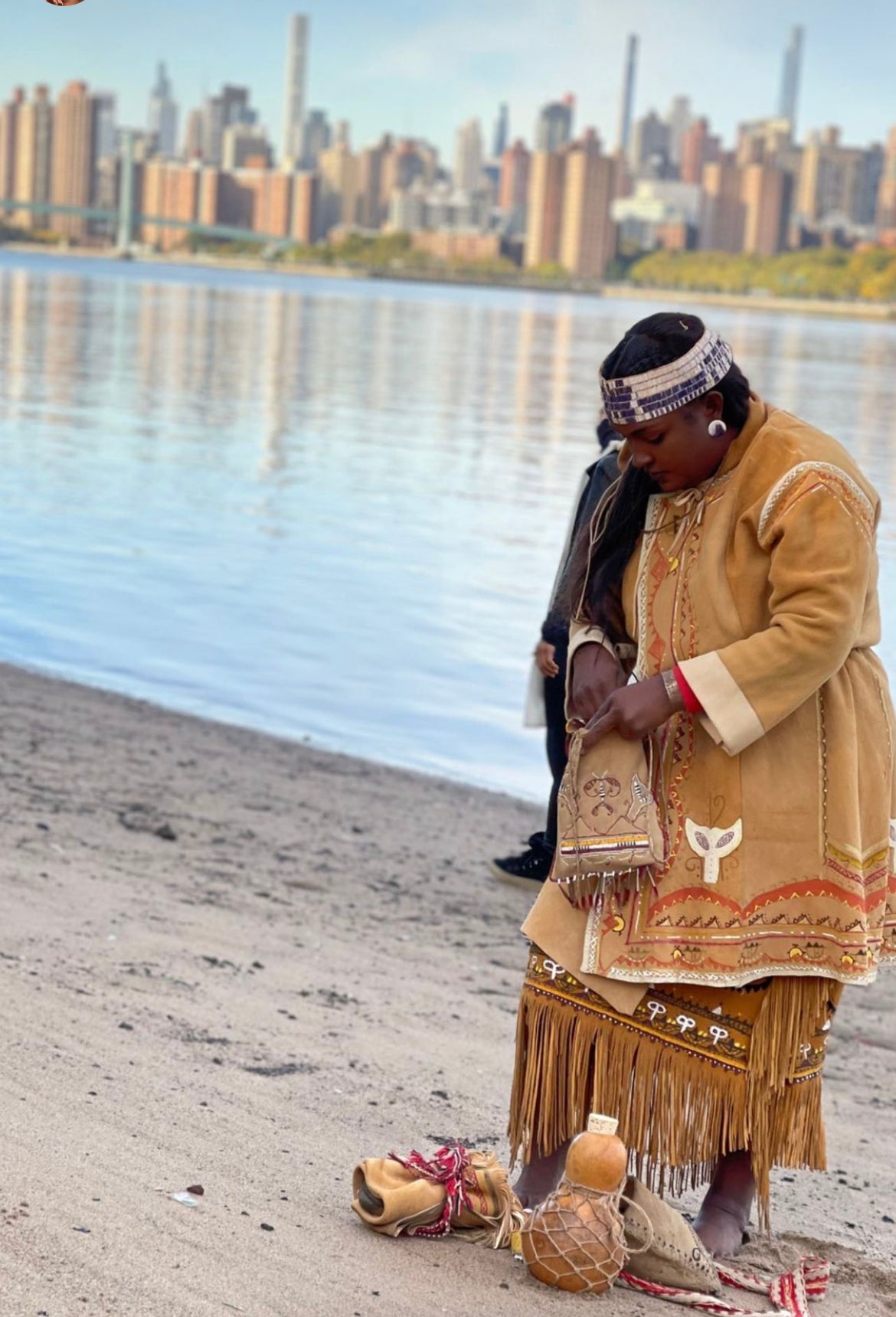
Preparing for the 2022 Water Ceremony in NYC. Photo by Adrian Childress.
—Chenae Bullock, is an enrolled Shinnecock Indian Nation Tribal member and descendant of the Montauk Tribe in Long Island, New York. She is a community leader, water protector, cultural preservationist, Indigenous perspective historian, and humanitarian. She is also the founder and CEO of Moskehtu Consulting, LLC, and a 2022-2023 Cultural Survival Writer in Residence.
Top photo: Paddling the mishoon in Sudbury, MA. Photo by Scott Foster.
